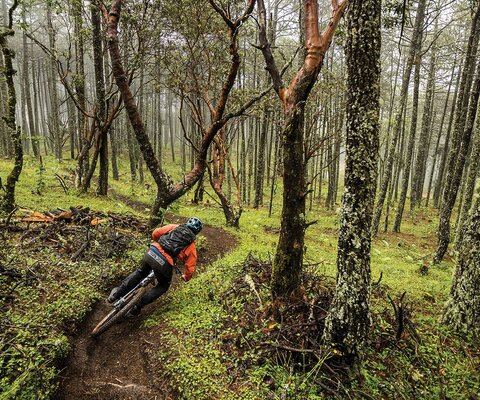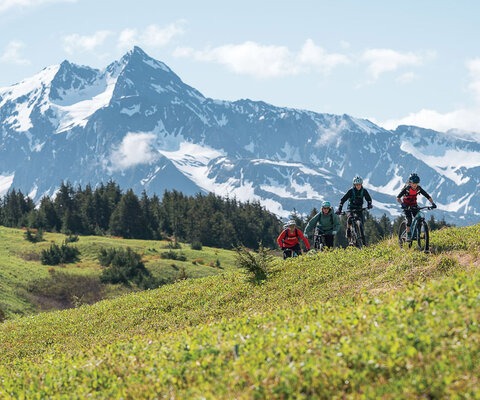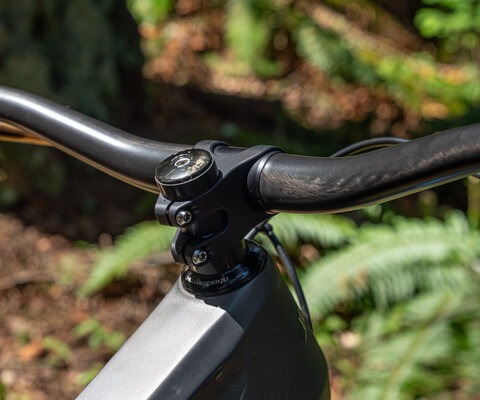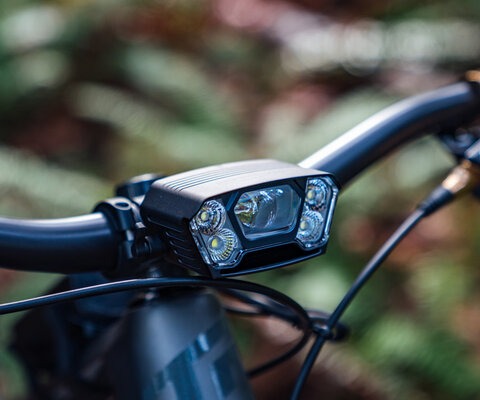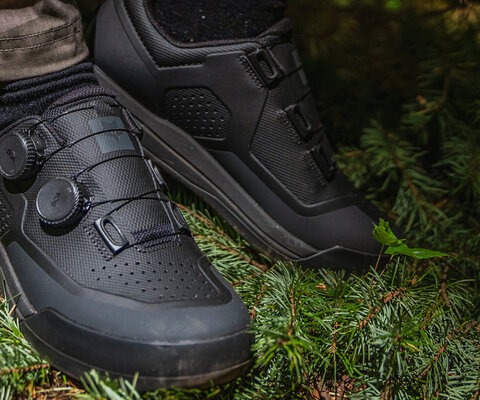
Honey & Blood The Beautiful Dichotomy of the Balkans
Words and Photos by Carlos Blanchard
Putting one foot in front of the other is all I can think about.
It’s hot, I’m dripping with sweat and we’ve just begun pushing our bikes up the day’s first climb. I gaze past my handlebars and behold the beauty of a golden landscape glowing beneath a bright blue sky. It’s mid-October in the Korab mountains of Southeast Europe’s Balkan Peninsula, and the autumn colors have reached their peak.
I stop to catch my breath, taking in the immensity of my surroundings before making my last push to the top. As I join my teammates, Germans Julia Hofmann, Daniel Schaefer and our Albanian guide Endrit, at the pass, we look back at the lonely border checkpoint we’d been shuttled through in a four-wheel-drive vehicle earlier this morning. Three men guard this solitary outpost, a recently constructed building with flags delineating the border between Kosovo and Albania.
We’ve spent the past two days riding in Kosovo, starting just outside of Pristina, the country’s capital and largest city. Our plan is to ride across these mountains, which straddle the borders between Kosovo, Albania and North Macedonia, and as we dip into Albanian territory, we know we have a long day ahead of us.
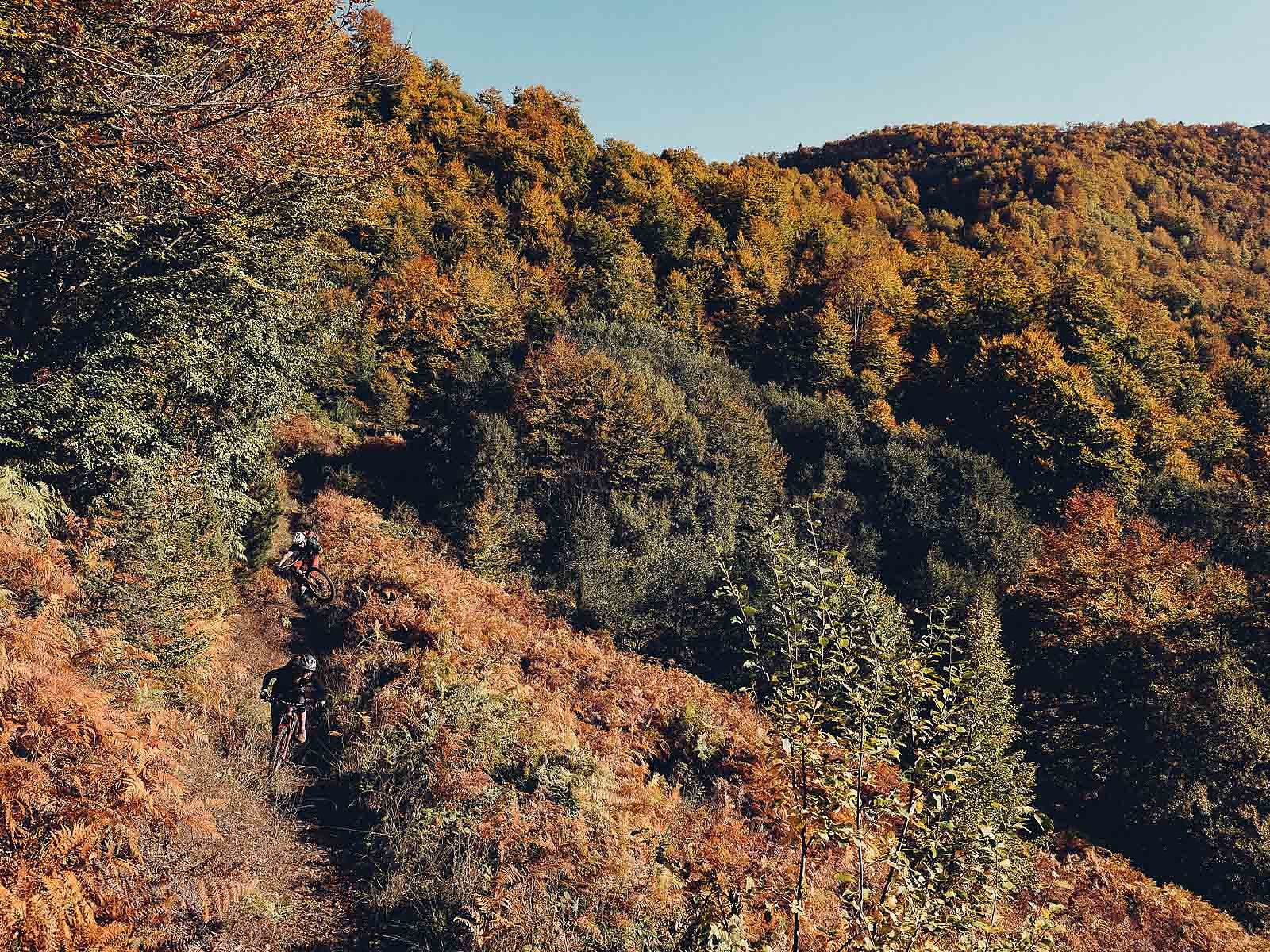
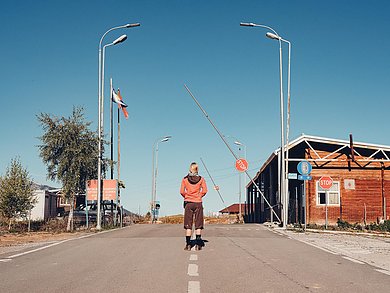
Our route will skirt the Kosovo-Albania border, linking up rough doubletrack sections with the occasional sliver of singletrack, and it’s a bit of an experiment. This is the first time Endrit has guided clients along this route by bike, but he remains optimistic that these seldom-used tracks will grant us two-wheeled passage through the mountains. Still, we need to cover some ground today.
“There are no villages in between,” Endrit explains. “We need to reach our goal for the day in order to continue.”
We soon begin an ascent through a vast pasture, and Schaefer pulls ahead of Hofmann and I, seemingly eager to get to the top of what will prove to be many climbs. As the tall grass sways gently in a calm wind, we retreat into our own thoughts and pedal in silence. I reflect on the contrast between the peaceful nature of these hills, now occupied only by the occasional shepherd, and the war-torn history of this region. With people of so many different ethnicities, languages and religions sharing this peninsula throughout the centuries, it has been scarred by conflict, and there is still a general fear of outsiders.

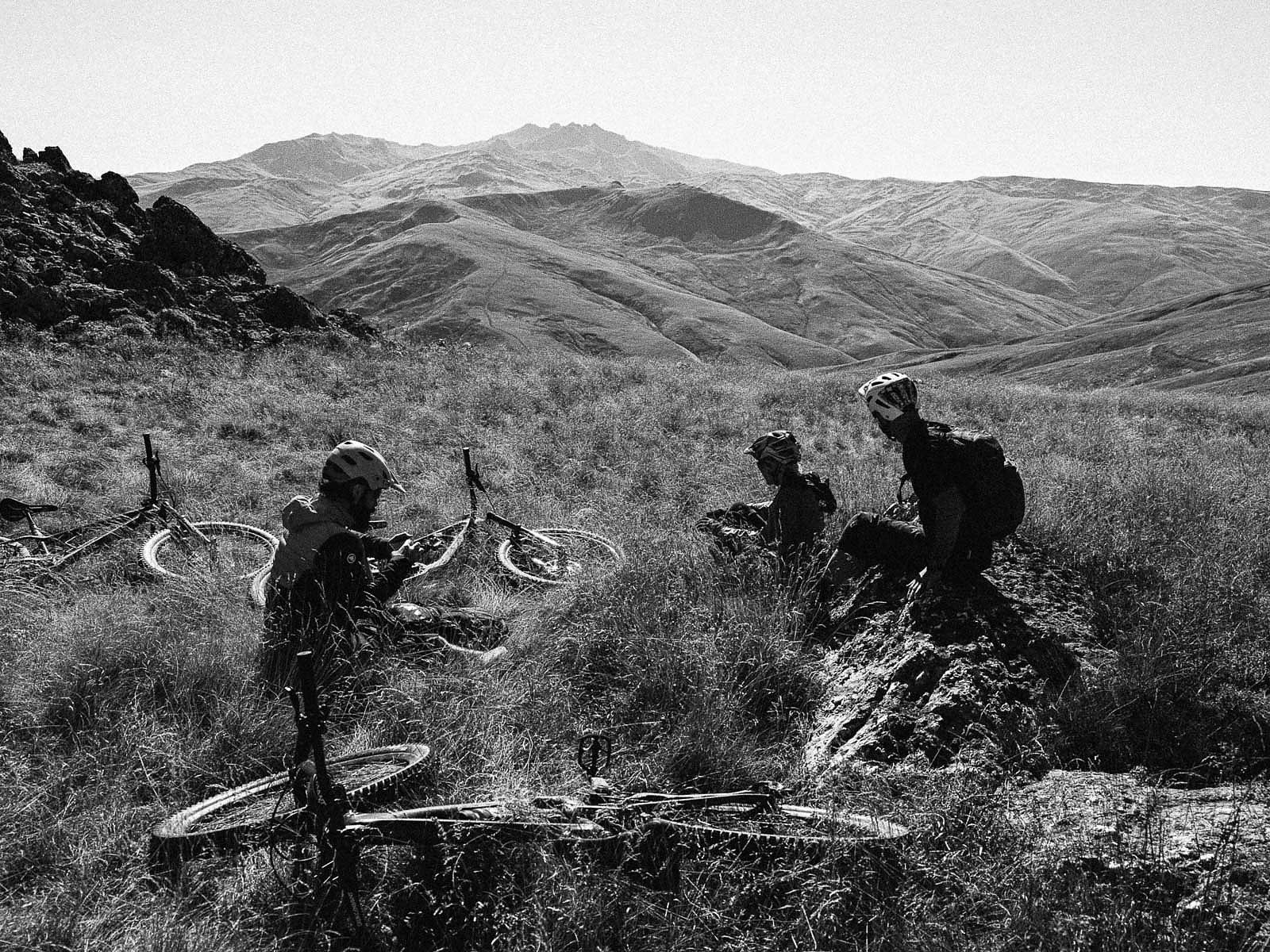
But for us, the only struggle is between our legs and the hills, and it’s obvious the primitive tracks we’re following were not designed for mountain bikes. Still, the hills are rolling and most of the climbs are gentle, the crest of each revealing how far we have yet to go. We pass a small stone marker engraved with letters we can’t read, followed by similar markers, eventually leaving all traces of humanity behind.
After several hours of pedaling, we top out at our highest point for the day—a rocky crest giving clear views of majestic Mount Korab, Albania’s tallest mountain and the namesake of its major range. At 9,026 feet, Korab’s rocky massif forms the border between Albania and North Macedonia, its pyramid-shaped peak eclipsing all others in the region.
Endrit explains that in Latin, the word “scardus” means “colorful,” which seems apt, given the constantly changing shades of yellow and orange autumn leaves we’ve spent the past two days pedaling among.
As we sit to eat our lunches in Korab’s shadow, Endrit tells us our route follows part of the High Scardus Trail, a 308-mile hiking path that spans the cross-border triangle between Albania, Kosovo and North Macedonia. Endrit explains that in Latin, the word “scardus” means “colorful,” which seems apt, given the constantly changing shades of yellow and orange autumn leaves we’ve spent the past two days pedaling among.
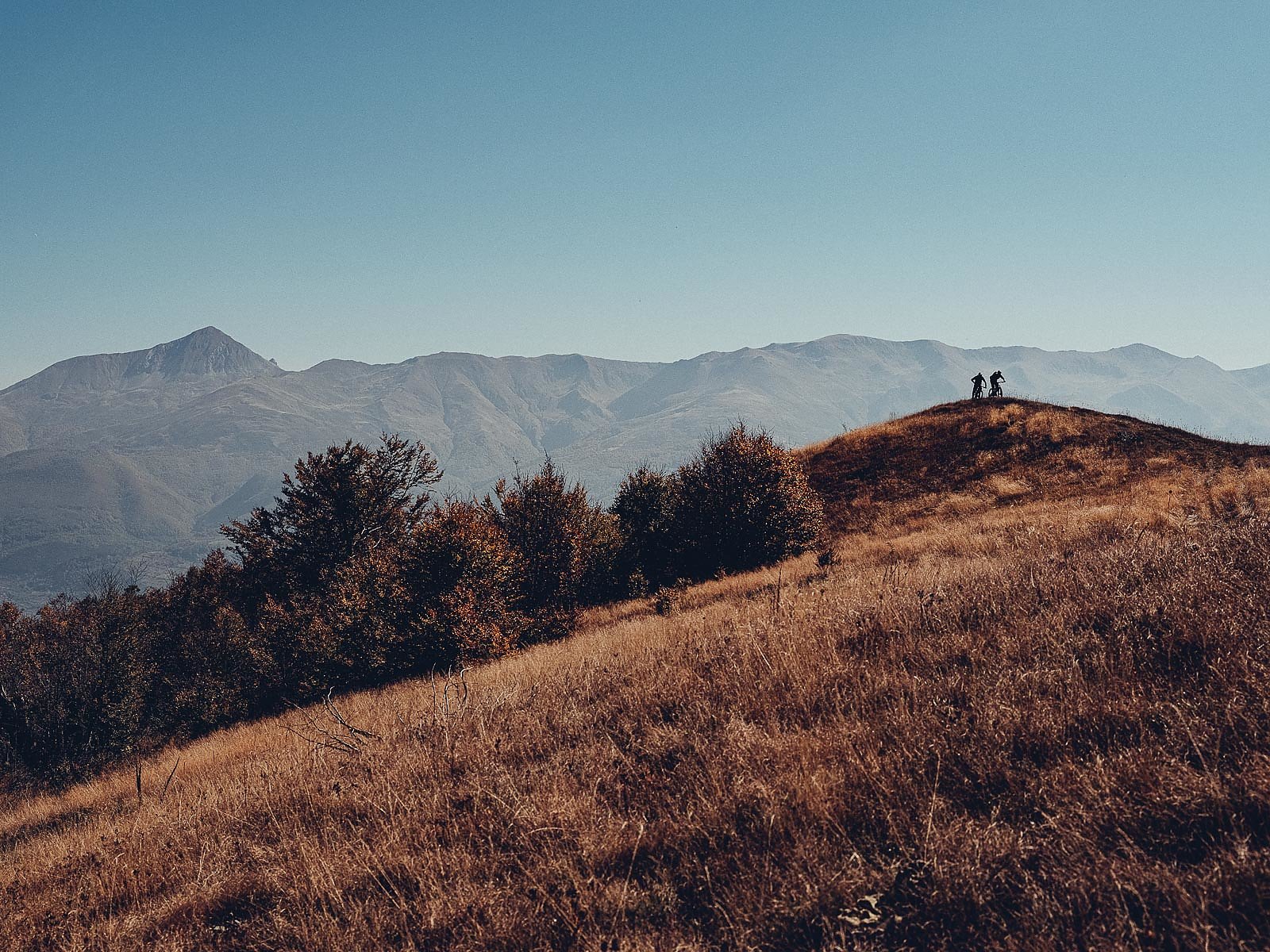
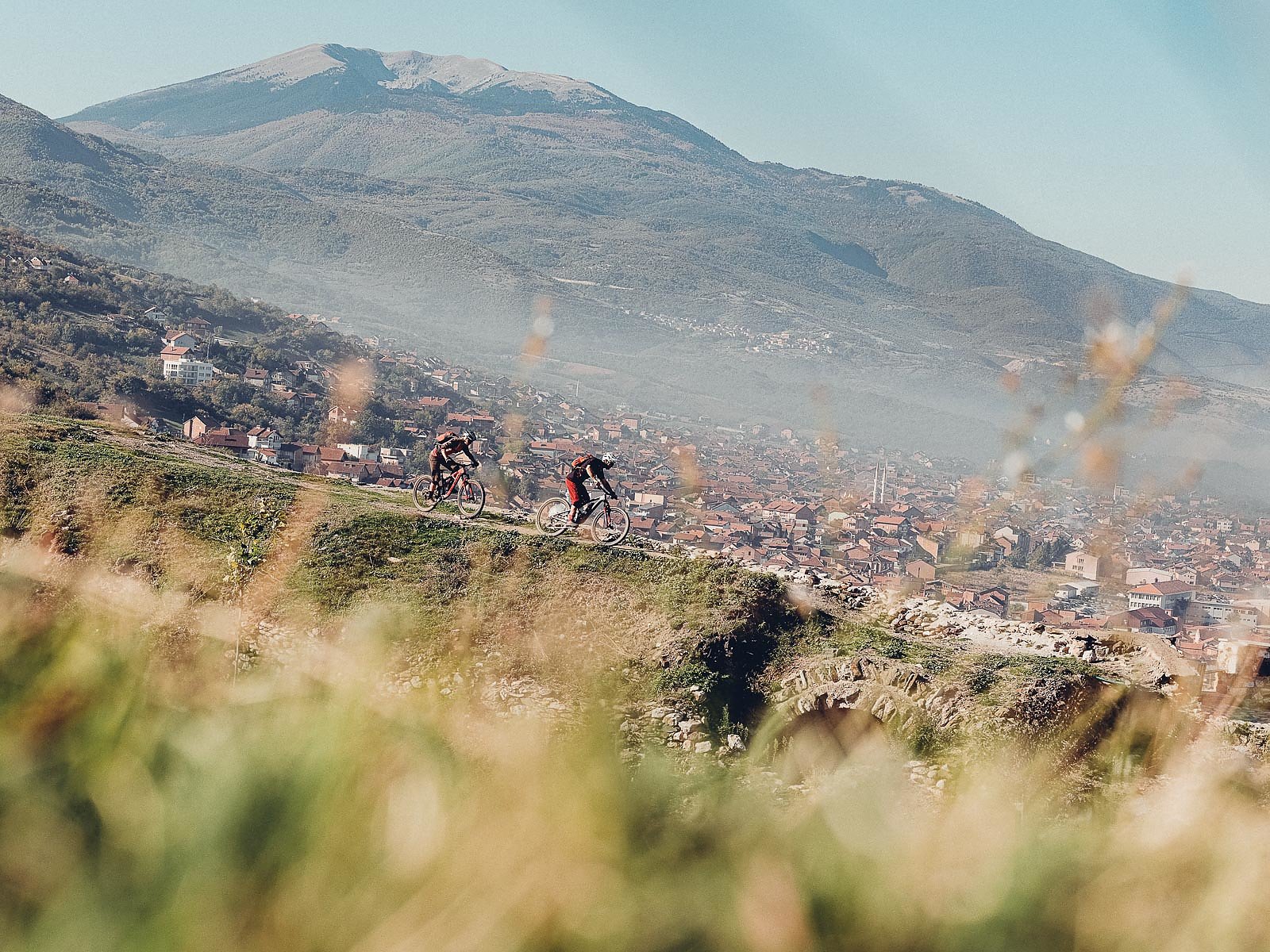
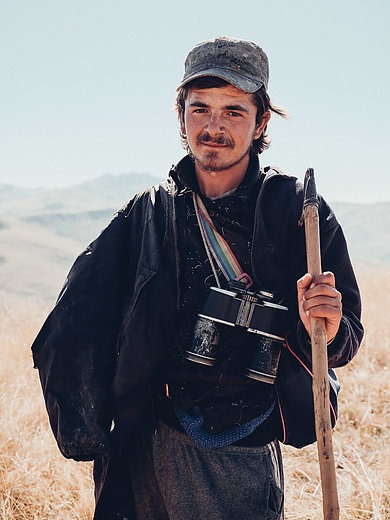
As we prepare for our descent, we forage through tall grass and rocks until we stumble upon a stretch of singletrack leading down the hillside. In the distance, we spot a figure walking up the trail toward us, and we ride down to greet a young shepherd tending a flock of black sheep. As his giant Shar Mountain dogs watch over the flock, the boy tells Endrit that he spends the entire warm season grazing his sheep in these mountains. Endrit tells us the 19-year-old is the only shepherd in the area with black sheep, and it’s clear to us he takes pride in the responsibility of looking after his flock. The boy doesn’t seem very interested in our bikes, and just seems happy to share the solitude that weighs heavily across this empty landscape.
As we take our leave, descending along the border of Albania and North Macedonia, I consider the similarities between the gentle, rolling terrain and the people we’ve encountered since our arrival in the Balkans. Everyone we’ve met so far has been relaxed, welcoming and extremely friendly—a reality that contrasts starkly with the region’s reputation for violence and ethnic bloodshed. Endrit has already shared many stories about growing up during the Balkan wars and the chaos he lived through. Just as he’s telling us that Albania once boasted a bunker for every four citizens, we see three giant structures looming out of the tall grass ahead. Looking like gray mushrooms sprouting from the hillside, these concrete bunkers serve as a grounding reminder of the region’s recent turmoil.
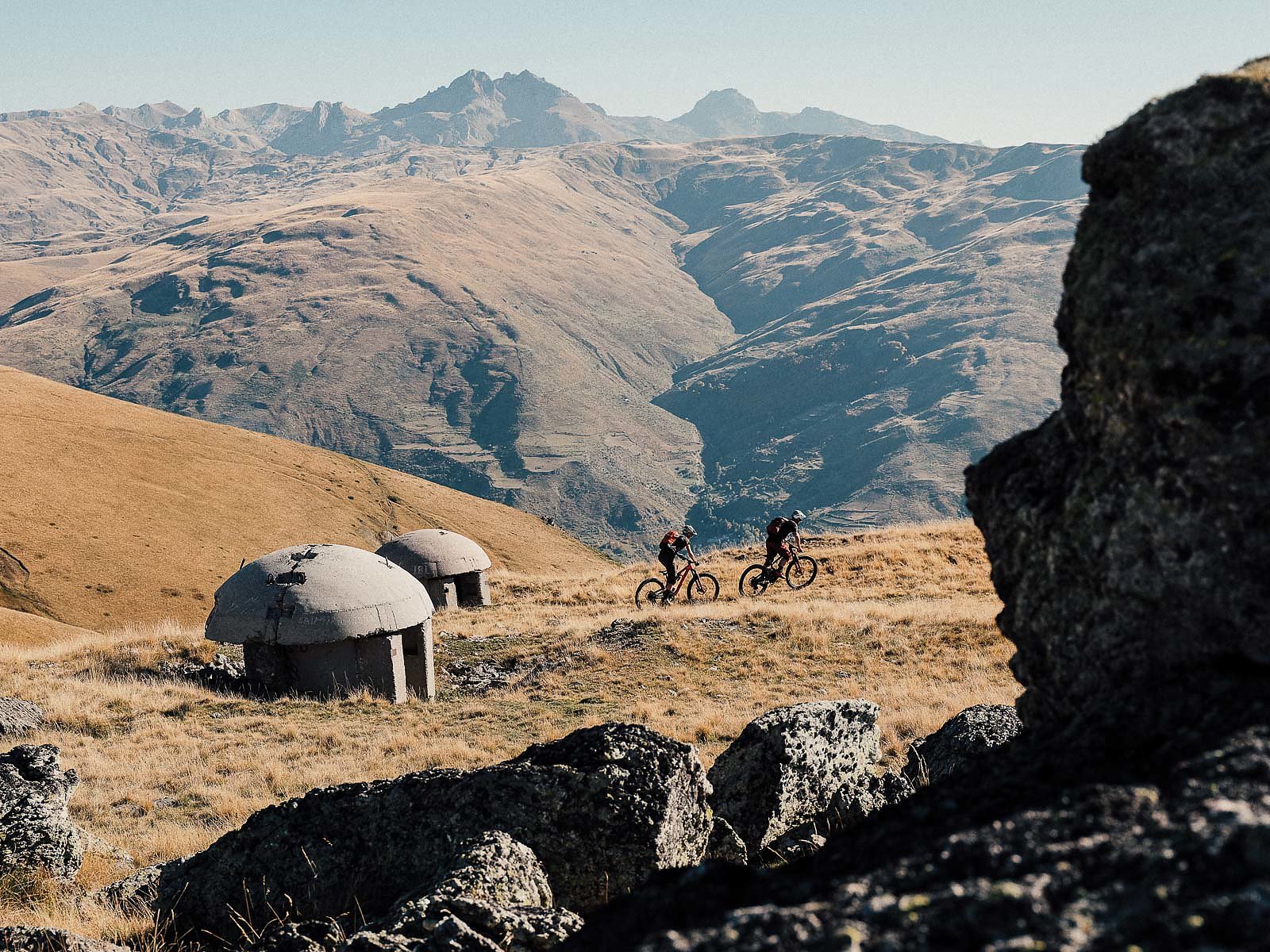
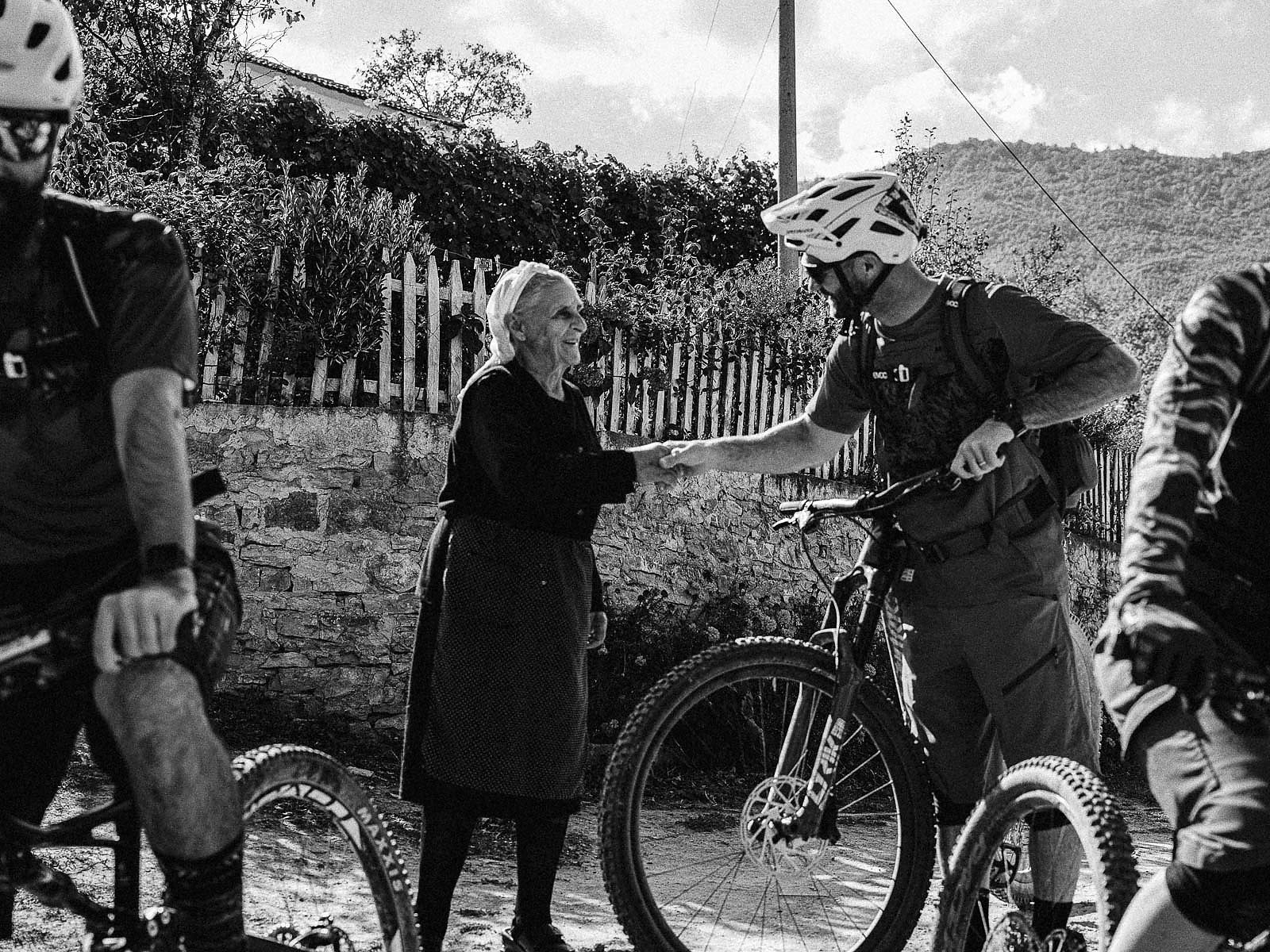

We stop to explore the ruins and notice another shepherd, his enormous dogs watching over a huge flock of sheep. He seems content to pass us in silence, and we continue to descend south along a rideable stretch of singletrack, passing dozens more bunkers as we ride away from Mount Korab into another colorful valley. We rip through fast corners and high-speed sections as the sun sets, ending the day in the remote village of Rabdisht, nestled between rocky cliffs, where we spend the night recharging with a dinner of white cheese, grilled meats and a little rakia, the local fruit brandy.
As we stuff our faces and toss back shots of the fiery spirit, our host tells Endrit about his village’s recovery, with aid organizations and government funding helping locals turn their homes into guesthouses accommodating the growing number of trekkers that attempt the High Scardus Trail each year. He beams with pride as he talks about the villagers’ efforts, and it’s clear they’ve put their hearts into this transformation.
The next day we take a vehicle transfer farther south, our paperwork in hand, ready to cross through the mountains into North Macedonia. Mounting our bikes and heading out on the High Scardus Trail’s southern-most section, we ride through another kaleidoscope of changing colors and concrete bunkers, their smooth, round roofs reminding us of toadstools popping up amid the rolling landscape. As we leave the bunkers behind and enter into North Macedonia, we ride past another shepherd heading toward Albania. He shows little interest in us, but his trio of Shar Mountain dogs is alarmed by the rolling of our wheels and races to herd the sheep away from what they perceive to be a potential threat to the flock. I breathe a sigh of relief, as I don’t like our chances of outracing dogs that look like small bears.
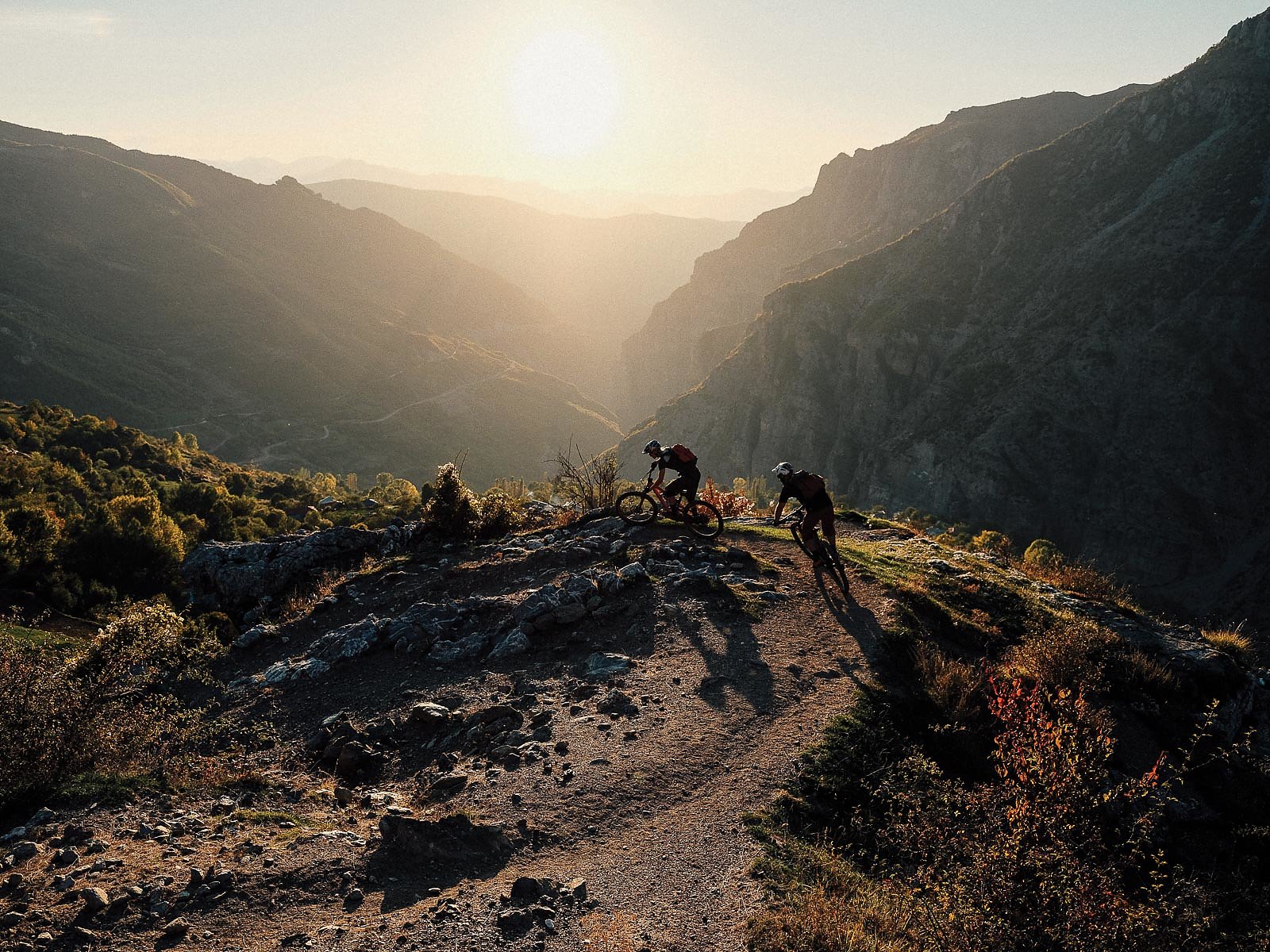
From here, the trail gets better and better as we leave the golden hills behind and approach the turquoise waters of Lake Ohrid, one of Europe’s oldest and deepest lakes, with a unique aquatic ecosystem that nurtures more than 200 endemic species. As we near the historic town of Ohrid, we leave the pastoral scenes of the last several days behind us, exchanging wilderness for the rustic cobblestones of an ancient civilization. Pedaling along the cobbles into the old town, the smiling faces of the locals seem to welcome us home.
I stand on the lakeshore, thinking about the sheer variety of terrain we’ve ridden through on our journey. From the steep descents above Prizren, Kosovo to the meandering hills around Mount Korab and through the bunker-filled pastures of Albania, we’d traveled through distinct yet interconnected worlds, bound together by centuries of conflict and peace. Looking out across the lake’s stillness, I ponder this dichotomy, realizing it’s this curious combination of blood and honey that makes this place truly special.
